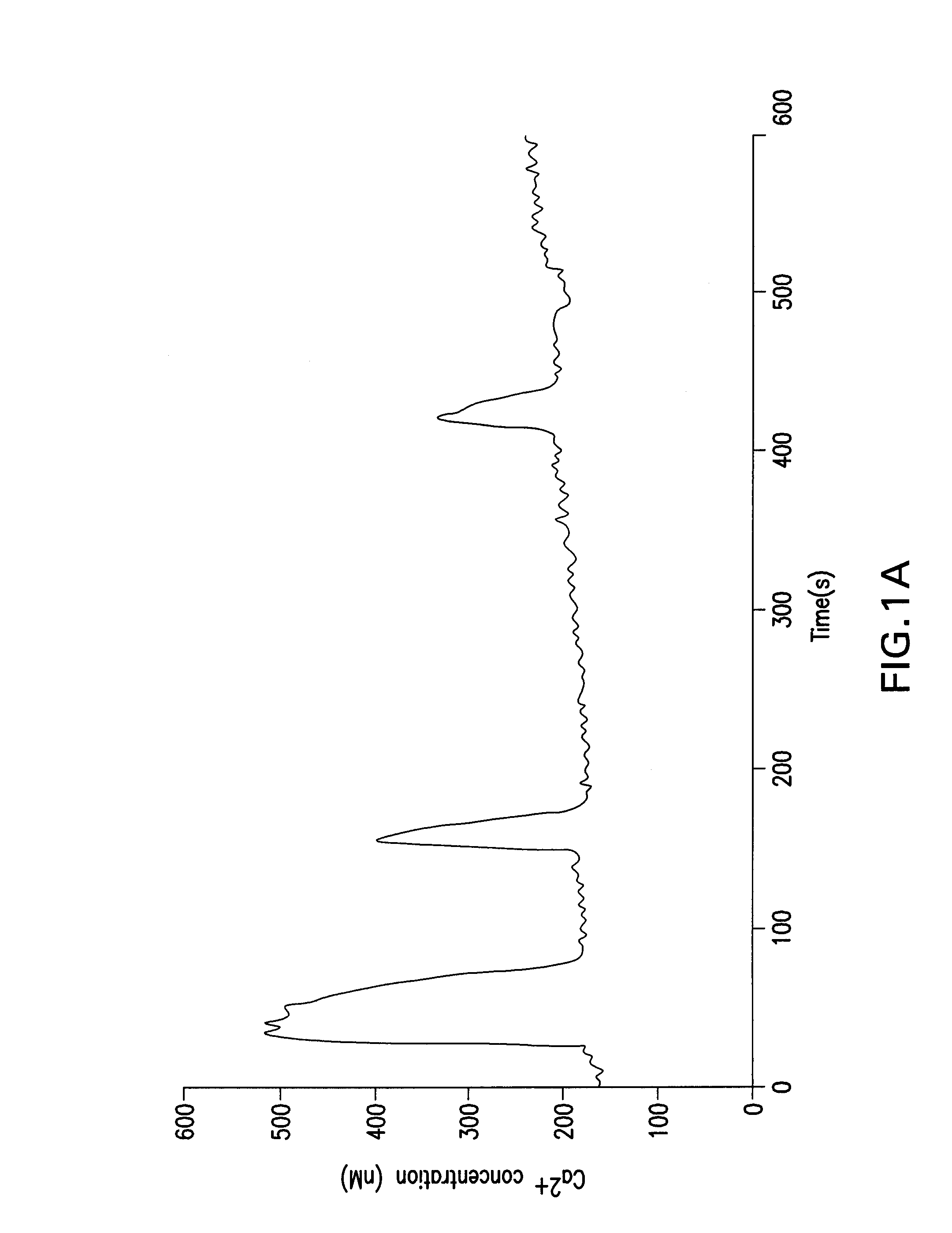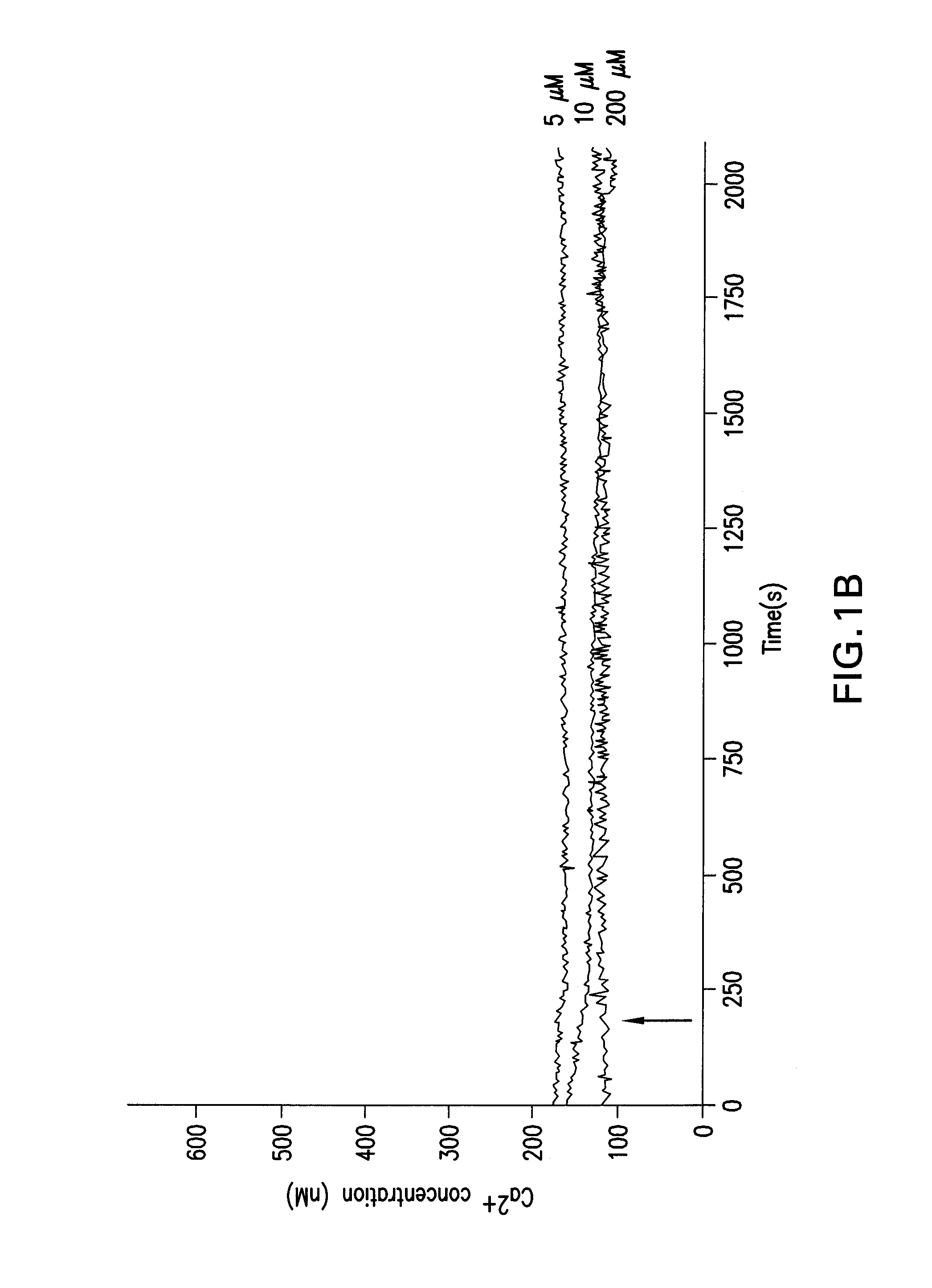Artificial oocyte activation
a technology of artificial oocytes and activation, which is applied in the field of animal husbandry and biomedicine, can solve the problems of poor efficiency and inefficient scnt technology, and achieve the effect of decreasing zn2+ concentration and reducing zn2+ concentration
- Summary
- Abstract
- Description
- Claims
- Application Information
AI Technical Summary
Benefits of technology
Problems solved by technology
Method used
Image
Examples
example 1
Oocyte Maturation
[0044]Oocytes were obtained from either pre-pubertal gilt ovaries from an abattoir (Farmland Foods Inc., Milan, Mo.), or sow-derived oocytes that were purchased from Applied Reproductive Technology (Madison, Wis.). Immature oocytes from gilt ovaries were aspirated from medium size (3-6 mm) follicles by using an 18 gauge hypodermic needle attached to a 10 mL syringe. Oocytes with evenly dark cytoplasm and intact surrounding cumulus cells were then selected for maturation. Around 50 cumulus oocyte complexes were place in a well containing 500 μL of maturation medium, TCM 199 (Invitrogen, Grand Island, N.Y.) with 3.05 mM glucose, 0.91 mM sodium pyruvate, 0.57 mM cysteine, 10 ng / mL epidermal growth factor (EGF), 0.5 mg / mL luteinizing hormone (LH), 0.5 mg / mL follicle stimulating hormone (FSH), 10 ng / mL gentamicin (APP Pharm, Schaumburg, Ill.), and 0.1% polyvinyl alcohol (PVA) for 42-44 hr at 38.5° C., 5% CO2, in humidified air. The oocytes from sows were shipped overnigh...
example 2
Various Oocyte Activation Methods
[0045]Different oocyte activation methods were used for the experiments. As conventional activation methods, either electrical or chemical activation was used. For electrical activation, mature oocytes were activated in activation medium (0.3 M mannitol, 1.0 mM CaCl2, 0.1 mM MgCl2, and 0.5 mM Hepes) by two direct-current (DC) pulses (1-sec interval) at 1.2 kV / cm for 30 μsec (using BTX Electro Cell Manipulator, Harvard Apparatus, Holliston, Mass.). For chemical activation, mature oocytes were incubated in Hepes-buffered Tyrode's lactate (TL-Hepes) media in the presence of 200 mM thimerosal for 10 min in the dark followed by 8 mM dithiothreitol for 30 min. For TPEN mediated activation, mature oocytes were incubated in TL-Hepes media with various concentrations of TPEN for different durations.
[0046]Activated oocytes were washed three times in PZM3 then incubated at 38.5° C., 5% CO2 until the embryos were examined on either day 2, 6 or 7. At the end of t...
example 3
Intracellular Calcium Measurement
[0047]The zonae pellucidae were removed after maturation and zona-free oocytes were loaded with the Ca2+ indicator dye, fura-2. For this purpose, they were incubated in the presence of 2 mM of the acetoxymethyl ester form of the dye and 0.02% pluronic F-127 for 40-50 min (both from Invitrogen). The dye loaded oocytes were transferred into a chamber with a cover-glass bottom and the chamber was then placed on the heated stage of an inverted microscope. Changes in the intracellular free Ca2+ concentration were recorded using InCytIm2, a dual-wavelength fluorescence imaging system (Intracellular Imaging, Inc.; Cincinnati, Ohio). During measurements the emitted fluorescence was detected at 510 nm after exciting the dye alternately at 340 and 380 nm. The ratio of the two emitted fluorescence intensities was calculated and the data are presented as fluorescence ratio values. Ratios of 1.0 and 5.0 correspond to about 100 and 1,200 nM Ca2+, respectively. In ...
PUM
| Property | Measurement | Unit |
|---|---|---|
| Time | aaaaa | aaaaa |
| Time | aaaaa | aaaaa |
| Time | aaaaa | aaaaa |
Abstract
Description
Claims
Application Information
 Login to View More
Login to View More - R&D
- Intellectual Property
- Life Sciences
- Materials
- Tech Scout
- Unparalleled Data Quality
- Higher Quality Content
- 60% Fewer Hallucinations
Browse by: Latest US Patents, China's latest patents, Technical Efficacy Thesaurus, Application Domain, Technology Topic, Popular Technical Reports.
© 2025 PatSnap. All rights reserved.Legal|Privacy policy|Modern Slavery Act Transparency Statement|Sitemap|About US| Contact US: help@patsnap.com


